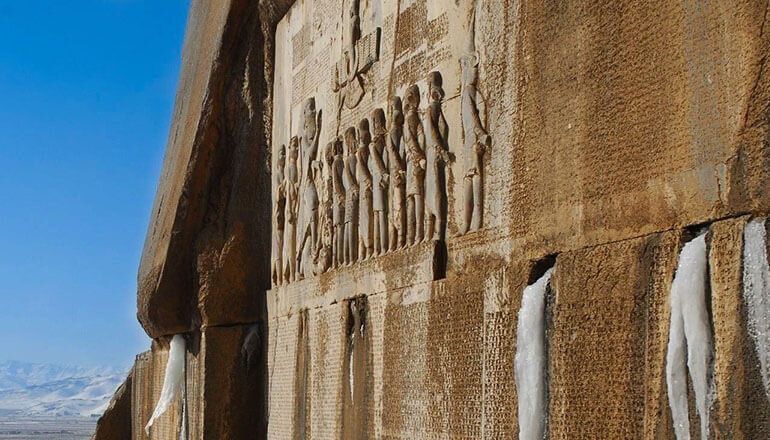UNESCO-registered Bisotun is in poor condition, tourism minister says

TEHRAN – The current condition of the Bisotun, which embraces giant bas-reliefs and inscriptions of Darius the Great, is not suitable for a World Heritage site, Cultural Heritage, Tourism, and Handicrafts Minister Ezzatollah Zarghami has said.
“The condition of Bisotun is not satisfactory at the moment and there are a number of problems at the World Heritage site,” the minister said.
Zarghami made the remarks during a visit he paid to the historical site in the western province of Kermanshah on Thursday, ISNA reported.
In an attempt to solve the problems, the tourism ministry is trying its best to strengthen the historical site’s infrastructure and invest in the area with funds from the ministry’s credit, he explained.
As a world-registered site, Bisotun is a symbol of identity not only for the Kermanshah people, but also for Iran as a whole, and it must be protected, he mentioned.
Located 30 kilometers east of the provincial capital Kermanshah, at the foot of the Zagros Mountains, Bisotun was inscribed on UNESCO’s World Heritage list on July 13, 2006.
Bisotun is a patchwork of immense yet impressive life-size carvings depicting king Darius I and several other figures.
The area was on the ancient trade route linking the Iranian high plateau with Mesopotamia and contains remains from prehistoric times to the Median and Achaemenid eras.
The principal monument of this archaeological site is the bas-relief and cuneiform inscription ordered by Darius the Great shortly after he ascended to the throne of the Persian Empire in 521 BC.
The bas-relief portrays Darius holding a bow, as a sign of sovereignty and treading on the chest of a figure who lies on his back before him. According to legend, the figure represents Gaumata, the Median Magus, and pretender to the throne whose assassination led to Darius’s rise to power.
Below and around the bas-reliefs, there are about 1,200 lines of inscriptions telling the story of the battles Darius waged in 521-520 BC against the governors who attempted to take apart the empire founded by Cyrus.
The inscription is written in three languages. The oldest is an Elamite text referring to legends describing the king and the rebellions. This is followed by a Babylonian version of similar legends. The last phase of the inscription is particularly important, as it is here that Darius introduced the Old Persian version of his res gestae (things done).
This is the only known monumental text of the Achaemenids to document the re-establishment of the empire by Darius I. It also bears witness to the interchange of influences in the development of monumental art and writing in the region of the Persian Empire. There are also remains from the Median period (8th to 7th centuries BC) as well as from the Achaemenid (6th to 4th centuries BC) and post-Achaemenid periods.
UNESCO has it that Bisotun bears outstanding testimony to the important interchange of human values in the development of monumental art and writing, reflecting ancient traditions in monumental bas-reliefs.
ABU/AFM

Leave a Comment